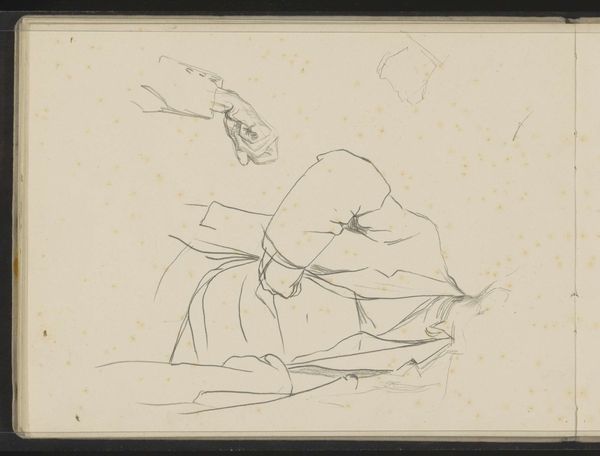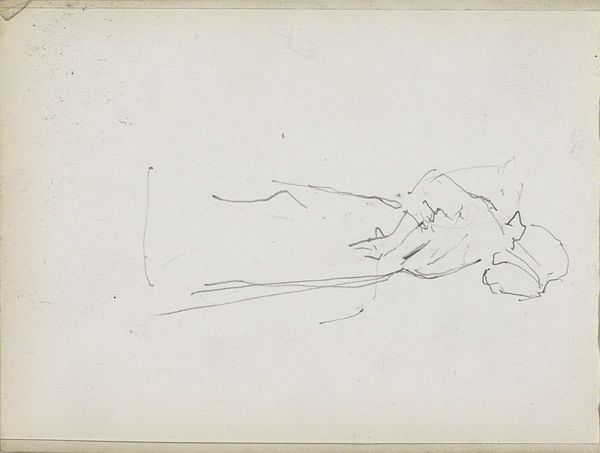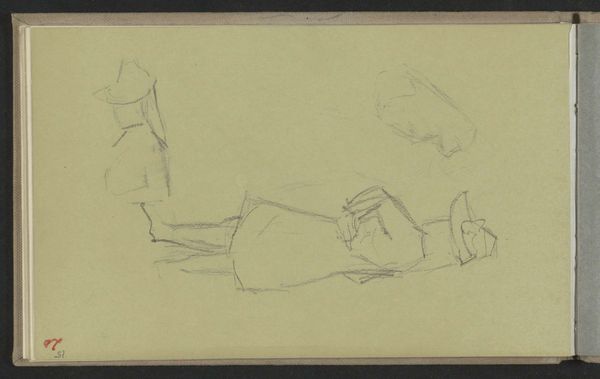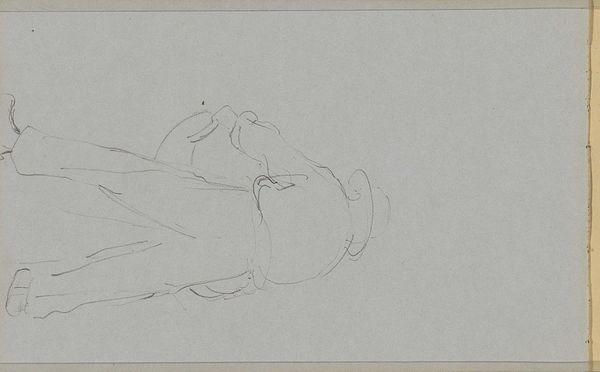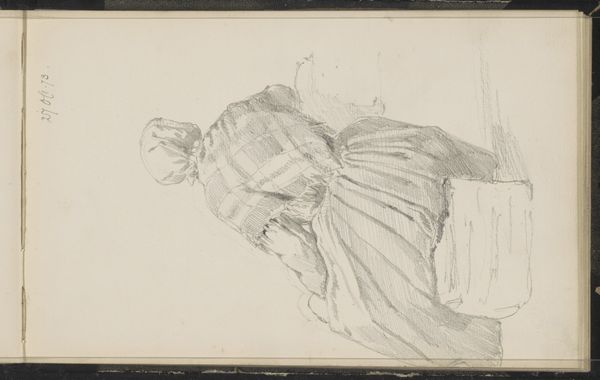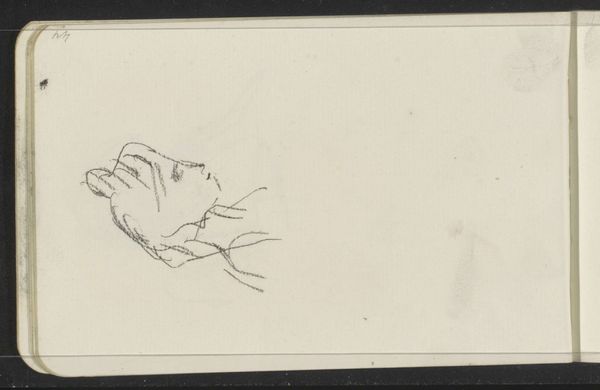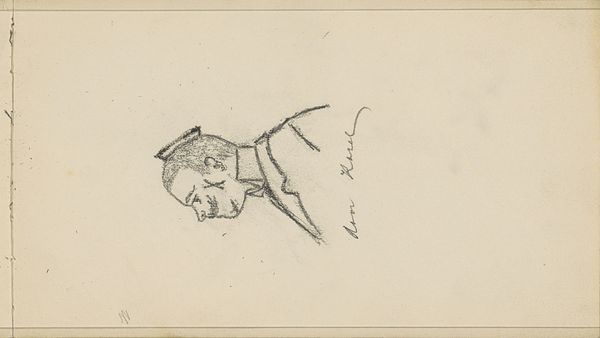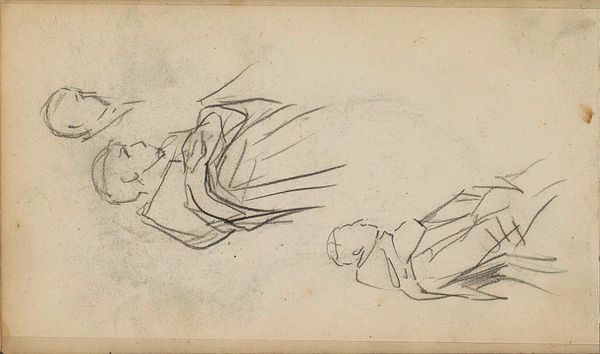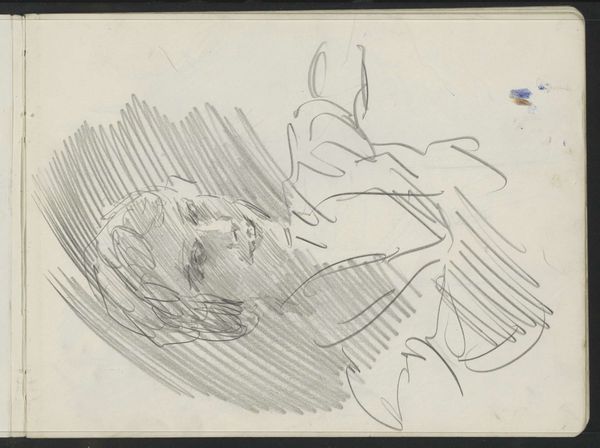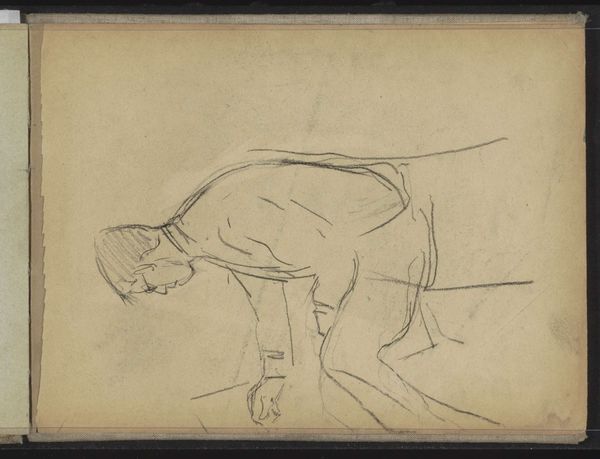
drawing, pencil, graphite
#
portrait
#
drawing
#
imaginative character sketch
#
toned paper
#
light pencil work
#
figuration
#
personal sketchbook
#
character sketch
#
ink drawing experimentation
#
pen-ink sketch
#
pencil
#
graphite
#
sketchbook drawing
#
watercolour illustration
#
sketchbook art
Copyright: Rijks Museum: Open Domain
Editor: This is Ferdinand Oldewelt’s "Zittende man met hand in de zij," a drawing made sometime between 1908 and 1923. It’s a quick sketch, probably graphite on paper, and what strikes me is how informal it is. What’s your take on it? Curator: As a materialist, I am immediately drawn to the likely origins of this sketch, which seem to arise directly from social structures that value studio labor and artistic skill. Think about the value given to a preparatory drawing versus a finished piece during that period. Editor: That's an interesting point. I was only looking at it aesthetically. Curator: Consider that the support for the drawing – the paper, the graphite – everything had a cost associated with it. Access to those materials dictated artistic production and opportunities. Were these materials widely available? Did Oldewelt make a conscious choice about them? Editor: I suppose I hadn’t thought about access to materials being a privilege back then. It makes you wonder if the apparent spontaneity is deceiving. Curator: Precisely! What appears as effortless might actually be the result of specific training regimes and access to certain types of education, skills acquired by specific materials and locations that defined class structure at the time. Editor: So, seeing it that way, it becomes much more about what the drawing represents, or, more precisely, *how* it was made, more than just a likeness. Curator: Exactly. By analyzing the material conditions of its production, we can move beyond just admiring it as a sketch and understand what it contributes in a social and cultural sense. Editor: That perspective has completely changed how I see the drawing. Thanks for that! Curator: Likewise! Thinking about the social dimensions inherent to something as "simple" as a sketch encourages questioning of inherent historical value systems and reexamination of the production conditions within various art-making communities.
Comments
No comments
Be the first to comment and join the conversation on the ultimate creative platform.
